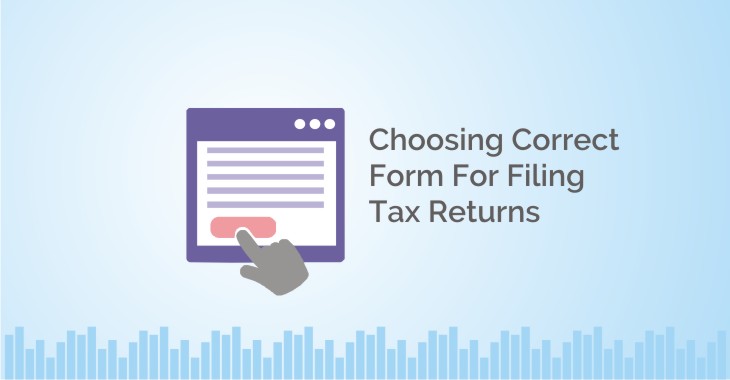Once you are ready with your income calculations and tax liability or refund, as the case may be, you need to get hold of the relevant Income Tax return form. With the advent of online tax filing or e-filling, life has become a bit easier. However, there still persist some confusion in terms of which is correct and relevant tax return forms. Income Tax department has come a long way from the days of SARAL forms.
Let us look at required forms for taxpayers.
Form ITR 1 is applicable in the following cases;
- A resident individual with Salary and pension income
- The individual owns a house property
- The individual have earned income (or incurred loss) from other sources (excluding dividend income, horse racing, lottery winning)
The above Form ITR 1 is not applicable in the following cases;
- Individual is NRI
- Owns more than one house property
- The individual has agriculture income (above Rs. 5,000)
- Individual’s total income exceeds Rs. 50 lakhs
- The individual has income from winnings from lottery, horse racing
- The individual having capital gains (& loss)
- The individual owns asset outside India and has a source of income outside India
If you do not fall within the applicable category for form ITR 1, you have to look for Form ITR 2
Form ITR 2 is applicable in the following cases;
- The individual is NRI or ordinarily resident
- Owns more than one house property and earned income or rental from house property
- The individual has agriculture income (above Rs. 5,000)
- Individual’s total income exceeds Rs. 50 lakhs
- The individual has income from winnings from a lottery, horse racing
- The individual having capital gains (& loss)
- If the dividend income of an individual is above Rs. 10 Lakhs
- The individual owns asset outside India and has a source of income outside India
However, do not select Form ITR 2 if you have;
- Taxable Income head is Gain or Loss “Business and Profession”
- Received share in profit or commission or interest or bonus from partnership firm as a partner
- Applicability for Form 1
Let us also look at some other relevant forms while filing your tax returns.
Form 16
So for a salaried taxpayer, Form 16 is important. This form also known as the certificate is issued by the employer stating that the TDS deducted from the salary of the employee and deposited with the tax department. Deduction of TDS from salary and its payment to tax department is the responsibility of the employer. This certificate validates the payment made to the tax authority.
Although the TDS is deducted every month while making salary payment, the Form 16 is generally issued annually at the end of the year on or before 15th June indicating total salary paid and total TDS deducted there from and paid to the tax department.
Form 16 has two part; viz;
- Part A
- Part B:
Part A of Form 16 is generated and downloaded from the TRACES website. This Form indicates general details in terms of Name, Address, PAN, TAN of the employer and PAN of the employee. This part also summarizes the total tax deducted and paid by the employer every quarter. The form is duly signed and authorized by the employer.
Part B of the form consists of salary break up and other relevant details such as allowable deductions under chapter VIA
One has to note that in case of a change in the job during the year, the individual will get Form 16 from both the employers’ separately.
Form 26AS
As per Sec. 203AA of Income Tax Act, Form 26AS is issued at the end of the financial year, usually by June of every year. This is basically a consolidated statement indicating a source of income and the Tax Deducted from Source (TDS) from income and paid to the tax authority. So on your income; be it rental (tenant), Interest (banks), salary (employer), the tax is deducted by the deductor is reflected in Form 26AS. Essentially Form 26AS exhibits tax paid in form of TDS on your income, any tax that you have collected at source (TCS), advance tax or self-assessment tax paid. This helps individual to ascertain any tax liability or refund for the relevant financial year.
ITR V
ITR V- stands for Income Tax Return Verification. ITR V is an acknowledgment that is sent by the Income Tax department to all assesses/taxpayers on filing the tax return. This is sent by an email when income tax return is filed online (without digital signature). It is a one-page document verified by income tax department for all the tax returns filed without a digital signature.
How to file Income Tax Return
So anyone with Gross total income of Rs. 5 Lakh and above is required to e- file, online tax return. Any other assessee/taxpayer can file the return in physical form or online. To file online return an individual need to register on the Income Tax Department website and fill the applicable form.









ITR 2 Form
Thanks For this post.
Hi,
Thank you for Reading!
Keep Reading